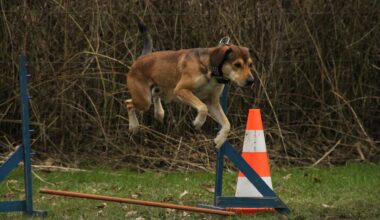Drones and Their Role in Cat Rescue
Innovations in technology constantly shape various fields, including animal rescue. One of the most exciting developments is the use of drones to locate lost cats. Pet owners often face emotional distress when their feline companions go missing. Traditional search methods can be ineffective and time-consuming, leading to prolonged anxiety. Drones equipped with advanced cameras and GPS technology provide a fresh alternative. These flying machines can cover large areas quickly and efficiently, increasing the chances of locating missing pets. Using drones allows rescuers to survey inaccessible or challenging terrains without risking human safety. The aerial perspective offers a broader view of the surroundings, enabling quicker identification of hiding places. Many rescue organizations have already begun incorporating drones into their operations. They report higher success rates in locating lost cats and reduced search times. Furthermore, community engagement increases when drones are deployed for these missions. People are more likely to assist when they see active efforts. Ultimately, the integration of drones in pet rescue is transforming how we think about lost pets. This innovation demonstrates how technology can enhance traditional methods, providing hope and tangible solutions to distressed pet owners everywhere.
When utilizing drones for cat rescue, several features contribute significantly to their effectiveness. Drones can be equipped with thermal imaging cameras, which detect heat signatures. Cats, being warm-blooded creatures, emit heat that drones can pick up even in dense cover or during nighttime searches. This is especially valuable since many lost cats hide in bushes or beneath structures. The ability to fly at different altitudes further enhances search capabilities. A drone can hover above a neighborhood, allowing operators to gain insights from various angles. Additionally, real-time video streams enable rapid assessments and decision-making. Rescuers can direct follow-up missions more effectively based on live footage. Furthermore, drones facilitate better coordination among rescuers. Teams can share aerial images and information instantly, ensuring everyone is on the same page. By combining modern technology with human intuition, the search process becomes more strategic. Communities also benefit from enhanced awareness surrounding lost pets. As more individuals witness drones assisting in localized efforts, conversations about pet safety become prevalent. In this way, technology not only rescues animals but fosters community solidarity in supporting pet owners facing distressing situations.
Community Involvement and Resource Optimization
Another noteworthy aspect of drones in cat rescue is their ability to mobilize community involvement efficiently. When a cat is reported missing, local volunteers often step in to assist with the search. With drones, efforts become organized and strategic. Community members who may not have expected to participate find new roles as drone operators or observers. This involvement can foster a sense of responsibility and collective purpose. Moreover, drones can be shared among various rescue groups to optimize resources. Instead of each organization buying expensive equipment, they can collaborate and share drones as needed. This co-ownership model encourages networking among local rescue organizations. It further strengthens their capabilities while minimizing costs. Additionally, educational workshops about drone usage and maintenance can empower communities. As people learn to effectively operate drones, the overall knowledge pool increases. Furthermore, social media plays a crucial role in these operations. Posts showcasing drone-assisted searches can reach larger audiences, prompting more residents to participate. The fusion of technology and grassroots involvement makes for a powerful combination in the quest to locate lost cats. Effectively, this approach shifts the focus toward saving lives rather than just searching for a lost pet.
However, integrated technologies like drones must be managed responsibly. Drone usage in urban environments brings about regulatory challenges. There are specific laws governing drone flights, privacy concerns, and aerial safety that must be adhered to during rescue operations. Ensuring compliance is crucial to maintain public trust and safety. Being transparent with local authorities and communities about drone use can alleviate any concerns regarding privacy invasion. Furthermore, training operators adequately is essential. Thorough training ensures operators can promptly handle any situations that arise during searches. Additionally, ensuring the drones operate efficiently and avoids issues like battery drainage is fundamental during long searches. Moreover, familiarizing the community with drone activities can minimize misunderstandings. Open discussions concerning drone functions, their purpose, and the benefits they provide can help build positive perceptions. As communities start recognizing the positives, the barriers associated with drone technology may diminish. Ultimately, education is key to successful integration in cat rescue missions across various settings. Establishing best practices and collaborative efforts fosters an environment of understanding and progress amidst evolving technology in animal rescue.
The Future of Cat Rescue Technology
As innovations continue to emerge, the future of cat rescue appears bright, particularly with advancements like drones. The applications will likely expand further as technology continues evolving and becoming more accessible. Future drones may integrate artificial intelligence and machine learning capabilities. Such features could enhance their ability to predict feline behavior based on patterns observed during searches, increasing efficiency. Advanced software could analyze collected data to optimize search routes and strategies automatically. Moreover, integrating crowd-sourced information from social media could refine the search process. Imagine a platform where users can report sightings while collaborating directly with drone operators. Establishing such networks would empower community involvement dramatically, making the process more efficient and comprehensive. Furthermore, manufacturers are continually developing lighter, more durable drones that can fly longer distances. Enhanced flight times mean fewer interruptions during crucial searches, providing more significant opportunities for successful cat recoveries. The potential is limitless, pushing the boundaries of what technology can accomplish for rescue efforts. Rescuing lost cats will become less stressful for owners with these advancements. The blend of community spirit and technology aims to create a vibrant future for animal rescue in our society.
Moreover, implementing drone technology into cat rescue has wider implications beyond just locating lost pets. This approach can lead to broader discussions on animal welfare and enforcement of responsible pet ownership. Increased visibility of drone operations may encourage owners to use safer fencing, microchips, and other preventative measures to protect pets from going missing. Communities that leverage such technology become catalysts for awareness surrounding animal safety concerns. Initiating conversations about responsible ownership takes shape at local gatherings and through educational campaigns prompted by drone experiences. Additionally, pet adoption becomes a focal point of outreach efforts during rescue missions. Engaging everyday citizens through aerial views often sparks interest in animal rescue. Many individuals may reconsider adopting a cat after observing the efforts made to locate lost ones. Organizations can use these encounters to promote responsible adoption practices, reducing future instances of lost pets. Furthermore, effective communication during searches builds community resilience. As neighbors rally to support one another, a sense of belonging is fostered. Ultimately, while the primary goal remains to rescue cats, the implications of utilizing drones lead to enriched community dynamics and heightened awareness surrounding animal welfare issues.
Final Thoughts on Drones in Cat Rescue
In summary, integrating drones into cat rescue represents a pivotal shift in how searches are conducted. The benefits are multifaceted and transformative for both rescuers and lost pets. Enhanced search capabilities reduce the time it takes to locate missing cats, sparing owners from distress. Community involvement becomes more streamlined, fostering connections among neighbors. Adoption campaigns, responsible ownership discussions, and broad awareness bolster the overall impact of these technology-driven efforts. Furthermore, it lays the groundwork for future innovations aligning with animal welfare priorities. As more organizations recognize this potential, we can expect a ripple effect within animal rescue efforts. Emerging technologies will revolutionize conventional practices in many sectors, and animal rescue certainly stands to benefit immensely. However, a shared understanding of responsible drone usage ensures safety and promotes community trust. Encouraging training, collaboration, and transparency can mitigate challenges associated with adopting new technology. By embracing this balance, we can pave the way for impactful rescue operations while fostering community spirit. The possibilities are vast, as each innovative step brings us closer to creating a world where lost pets can reunite with their families swiftly and safely.
As we look ahead, ongoing dialogue about innovations in cat rescue will also heighten expectations. The future for lost cats depends significantly on how well communities adapt to new technologies. A willingness to embrace drones reflects a proactive attitude essential for effective animal rescue. Equally important is the acceptance of responsibility among pet owners. As drone technology progresses, society must work towards balancing safety and innovation. Educational initiative by local authorities and rescue organizations ensures that public knowledge keeps pace with evolving capabilities. Ongoing outreach offers forums for updates on regulatory changes, potential partnerships, and emerging technologies relevant to animal welfare. As each stakeholder remains informed, the community can actively shape future pet rescue dynamics. Engaging conversations surrounding lost pets can lead to enhanced community programs, fund-raising activities for advanced tech tools, and more. Together, humans and technology can function as allies in ensuring the safety of our beloved feline friends. Drones mark just the beginning of a broader movement towards integrating technology in pet welfare efforts. By remaining connected and dismantling misconceptions, we can drive changes that reflect compassion and understanding in efforts to care for animals.


